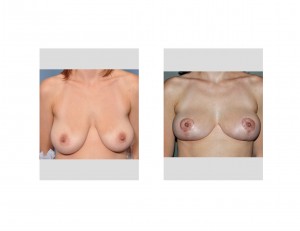
Adding support to the lower pole of the breasts during a breast lift procedure has been done with a wide variety of methods. These have included autologous methods using sutures to resuspend and support the lifted breast mound as well as repositioning/reshaping the breast mound itself. A number of mesh or slings of various materials have also been used, most recently allogeneic dermis (e.g., Alloderm) and synthetic fibers. (e.g., Siri) All have been associated with a variety of successes and also complications. (e.g, infection) The perfect breast lift material/method remains to be developed and/or determined.

GalaFLEX is currently available in typical mesh configurations which must be cut and shaped to provide the desired lower pole sling effect. Once shaped it is sutured into position onto the chest wall and acts like a cradle to support the lifted breast tissue. But new GalaFLEX shapes specifically for breast lift and/or breast reduction surgery are being developed that will make it more of an ‘out-of-the-box’ device that requires minimal manipulation of the material for proper placement.
The concept of adding support to maintain upper pole fullness and prevent/reduce secondary breast sagging has long been recognized as being needed for some breast lift patients. This support is always done the easiest by adding a graft or implant to achieve it. Whether GalaFLEX is the best choice out of all our current material options will ultimately be determined by the proverbial test of time.
Dr. Barry Eppley
Indianapolis, Indiana



